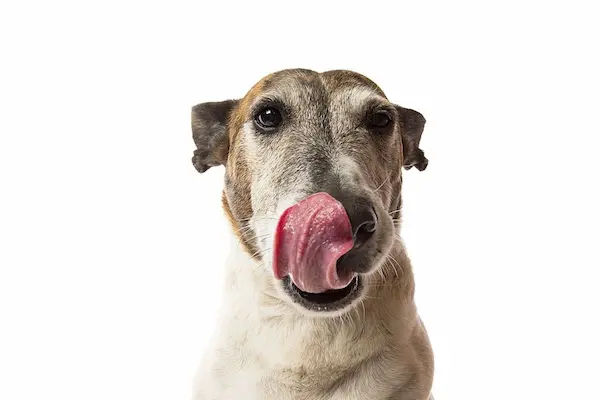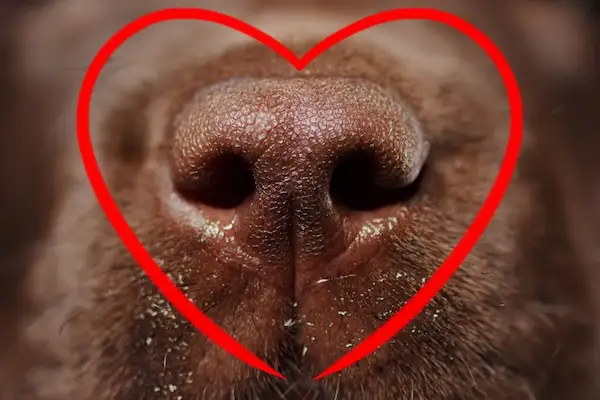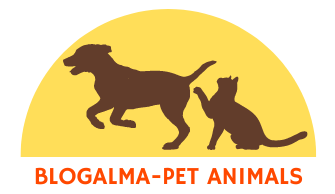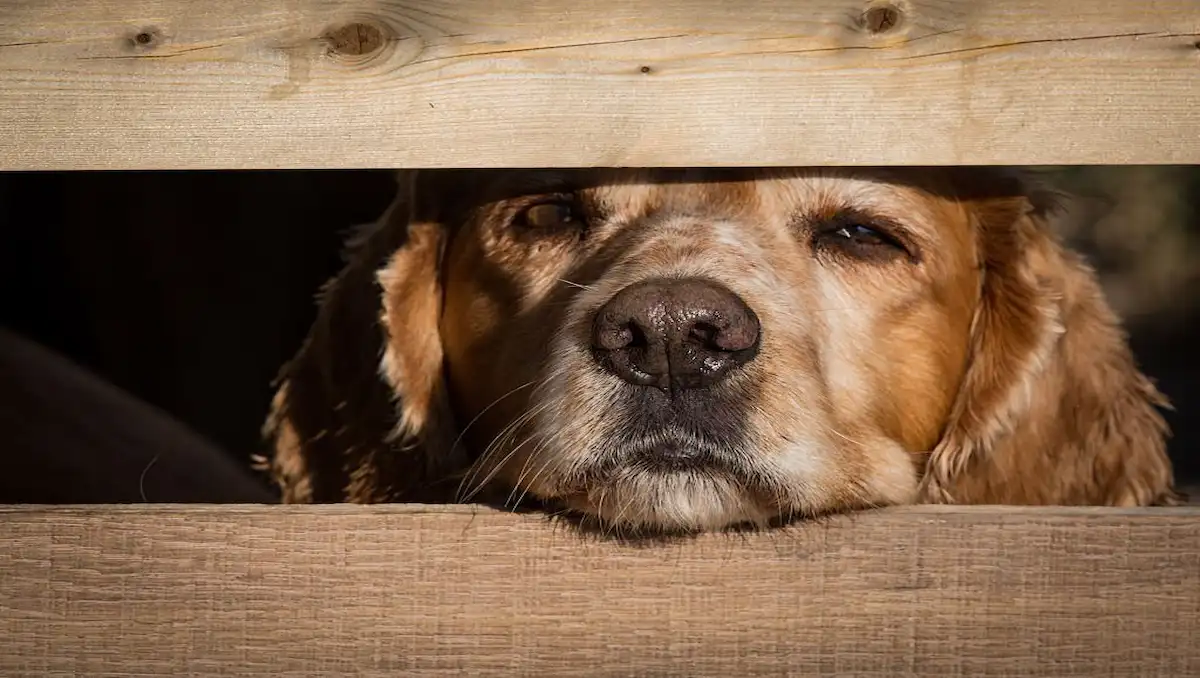If you’ve ever wondered Why Are Dog Noses Wet, you’re not alone. The wet nose is one of the most distinctive features of dogs, but what exactly causes this phenomenon? Understanding Why Are Dog Noses Wet not only piques our curiosity but also provides insight into a dog’s health and well-being.
A wet nose in dogs is a sign that their body is functioning properly. The moisture helps enhance their incredible sense of smell, which is crucial for their exploration and understanding of the world around them. The sweat glands in their noses produce this moisture, capturing scent particles in the air and allowing dogs to detect scents more effectively.
Additionally, the moisture on their noses serves to cool them down, similar to how humans sweat. However, it’s essential to recognize that a dry or hot nose can indicate potential health issues. In this article, we will explore the reasons Why Are Dog Noses Wet or dry, and what these conditions mean for your pet’s health.
Does a wet nose always signify that a dog is healthy? How can you use this information to assess your dog’s overall condition? Join us as we dive into this fascinating topic and uncover more about the importance of dog noses!
The noses that are wet are more effective.

It is vital to dogs, which is why noses are regarded as a symbol of respect in the canine world. As opposed to humans who rely solely on sight to live in our world, canines utilize both smell and sight to observe their surroundings as well as to communicate.
Sight is of the utmost importance to humans, which is why humans spend more time analyzing visual data as opposed to olfactory data. Dog brains do differently and are focused on the scent of the dog more than what it can see. In the end, a functioning nose is vital to the survival of a dog Wet noses perform better than dry noses.
Canines have more than 100 million sensory receptors within the nasal cavity as compared to just six million for humans. Additionally, the part of the canine brain dedicated to the analysis of odors is approximately 40 times bigger than the equivalent part that humans have.
It’s actually been proven that dogs smell anything from 1000 to 10 times more than humans because of having an extra olfactory instrument known as Jacobsen’s organ, which increases the capacity of their noses to detect. Jacobsen’s Organ is located within the nasal cavity, and it extends into the mouth’s roof between the upper incisors. The amazing organ functions as a second organ of olfaction specifically designed to communicate chemically.
The dog’s nose is most effective when they’re damp, as the scent molecules stick more on damp surfaces.
Wet noses are cooler.
Wet noses offer another benefit. They can help keep dogs cool. They disperse heat via their feet and also through panting. They use their nasal passages for cooling mechanisms too.
How do noses get wet?
Wet noses can help dogs to smell and perceive the world more clearly. How do noses become wet?
- Nose glands produce mucus. The lining inside the nose of dogs has special glands that make mucus to keep the nasal passages moist. A mucus that thin sticks to the nose, increasing the absorption of smell chemicals and increasing the dog’s capacity to smell. The mucous glands that are located inside the nostrils also create clear fluid, which aids in the cooling process via evaporating.
- Dogs love to lick their noses. There are dogs who frequently lick their noses, and they’re very adept at keeping their noses coated with saliva. The tongues of dogs can easily reach the top of the nose when they are breeds like Collies which have large noses.
READ MORE: dog ear hematoma What you do not know about hematoma
What is the reason they like to lick their noses?
Dogs use their noses to keep themselves clean because the noses of dogs get dirty because canines sniff everything. No matter what it is, whether it’s food out of the bowl the pollen of the flower, or dust on the couch, dogs’ noses get dirty and require frequent licking in order to be clean.
The dogs also lick their noses to collect small particles that are inside their mouths. The mucus that comes out of the nose, loaded with scent-related particles gets transported to the mouth’s roof where the Jacobsen’s organ is. The act of licking your nose improves your sense of smell and helps to enhance the function of the Jacobsen’s organ.
Moisture is so crucial to the sense of smell in dogs that dogs are taught to keep their noses wet and automatically wipe their noses when they dry. Dogs who are smart don’t want to miss crucial information because of dry nostrils!
Noses get wet at work. The canine nose is ferocious. Dogs rely on their sense of smell, as well as vision, to navigate through the world. They smell a lot. Dogs sniff with their noses while looking for something new. They stick their noses into damp vegetation, grass, leaves, and puddles. They emerge with their noses wet when they’ve absorbed water from the surroundings.
READ MORE: Why do dogs have wet noses and cold as well as dry ones?
what does it mean when a dog’s nose is dry?

A nose that is wet is normal, however dry noses aren’t unusual. Many believe that healthy dogs have an icy, wet nose while an animal suffering from an illness has a dry, warm one. It’s not always the case. The temperature and moisture of a nose is not an indicator of overall health. Certain healthy dogs have naturally dry noses in comparison to other breeds. In the same way, sick dogs may have dry, cool noses.
A wet nose is normal, but a dry nose isn’t necessarily abnormal.
A healthy dog might be able to have a warm and dry nose following a nap or following intense physical exercise caused by dehydration. Certain dogs develop dry, chapped eyes when they get older or after exposure to elements (extreme sunlight or wind). Dry noses don’t necessarily mean an indication of trouble.
The temperature of the dog’s nose isn’t a reliable indicator of body temperature overall So should you be concerned if your dog’s nostrils are dry and hot but normal, there’s no reason to worry.
If dryness of the nose is accompanied by other symptoms of illness like lack of appetite or listlessness of appetite, it is recommended to consult your veterinarian.
If the skin around the nose turns pink or the nose cracks or develops sores, you should consult the vet as these may frequently be a sign of an autoimmune disorder.
READ MORE: Care of Open Wounds in Dogs
why do dogs have wet noses?
Dogs rely on their nose, together with their sight to navigate through the world. Therefore, they are able to sniff out a variety of things. Dogs sniff with their noses whenever they are looking at something new. They stick their noses into damp grass, leaves, or puddles. They leave with wet noses when they’ve absorbed water from the surroundings.
dog wet nose dripping
A nasal discharge of pus or mucus may indicate that your dog is suffering from a fungal, bacterial, or viral illness. Other indicators of infection may include a foul smell, nosebleeds, and coughing or choking that results due to a post-nasal drip. Treatment is based on the root cause.
READ MORE: Piroxicam: Uses, Side Effects, Dosages, Precautions
What does an overly moist nose refer to?
Dry noses may signal trouble, but so are excessively wet ones. Clear nasal discharge is normal. When you observe an excess of mucus, or if mucus becomes thick or discolored (think yellow or green) consult your physician. Nasal discharge may signal respiratory illnesses or foreign bodies that have accumulated in nasal passages. A blood-colored discharge could be a sign of infective diseases caused by ticks, inflammation, or even cancer.
Taking Care of Your Dog’s Nose
It’s been long believed that a cool and wet nose is a sign that a pet is in good health. But this isn’t the case. A dog’s nose that is sick could be cold, hot dry, wet, or even dry. Take note of what the nose of your dog looks at when it’s clean. it’s easier to detect issues when they appear.
When you examine your dog’s nostrils examine it for signs of unusual discharges, like blood. Also, keep an eye on dryness or a dry nose or one that is paler than usual. Watch the nose of your pet as it breathes. If nostrils appear to flare more than normal, it could indicate breathing issues.
Always consult your vet regarding your concerns. Since nasal discharge in dogs can take on diverse colors and can be caused by a variety of things an examination at the earliest opportunity performed by your vet is usually the most effective way to look to the root of a nose discharge in a dog.
Conclusion: Why Are Dog Noses Wet
In the end, understanding why dog noses are wet or dry provides valuable insights into your pet’s overall health. A wet nose typically indicates that a dog’s senses are functioning at their best, helping them stay connected with their environment.
However, a dry or warm nose doesn’t always signal a problem—changes can be due to external factors like weather or activity. That said, it’s important to monitor your dog for any other signs of illness, such as lethargy, changes in appetite, or unusual behavior.
If you’re ever unsure, consulting a veterinarian is the best way to ensure your furry friend stays happy and healthy.

